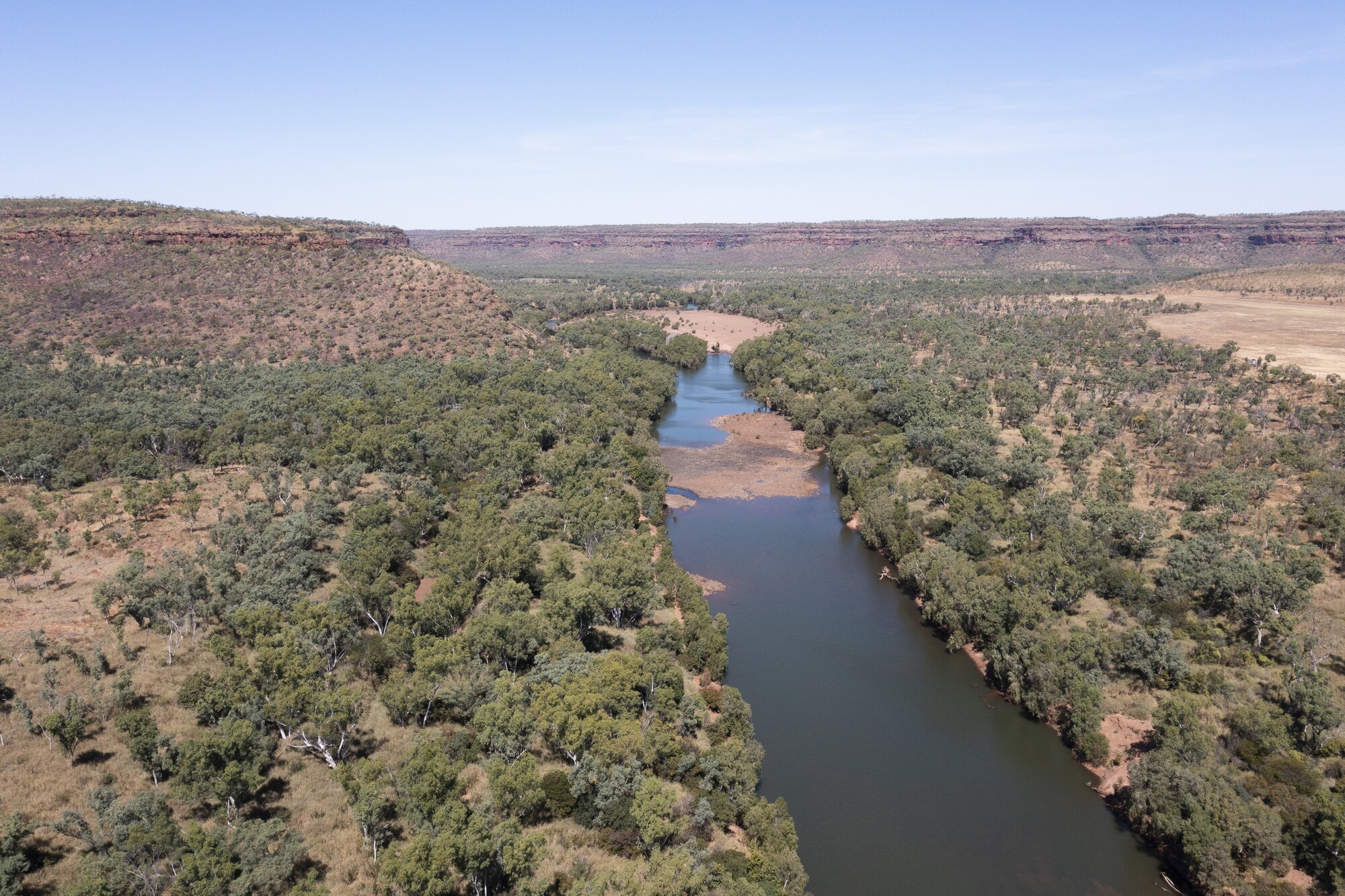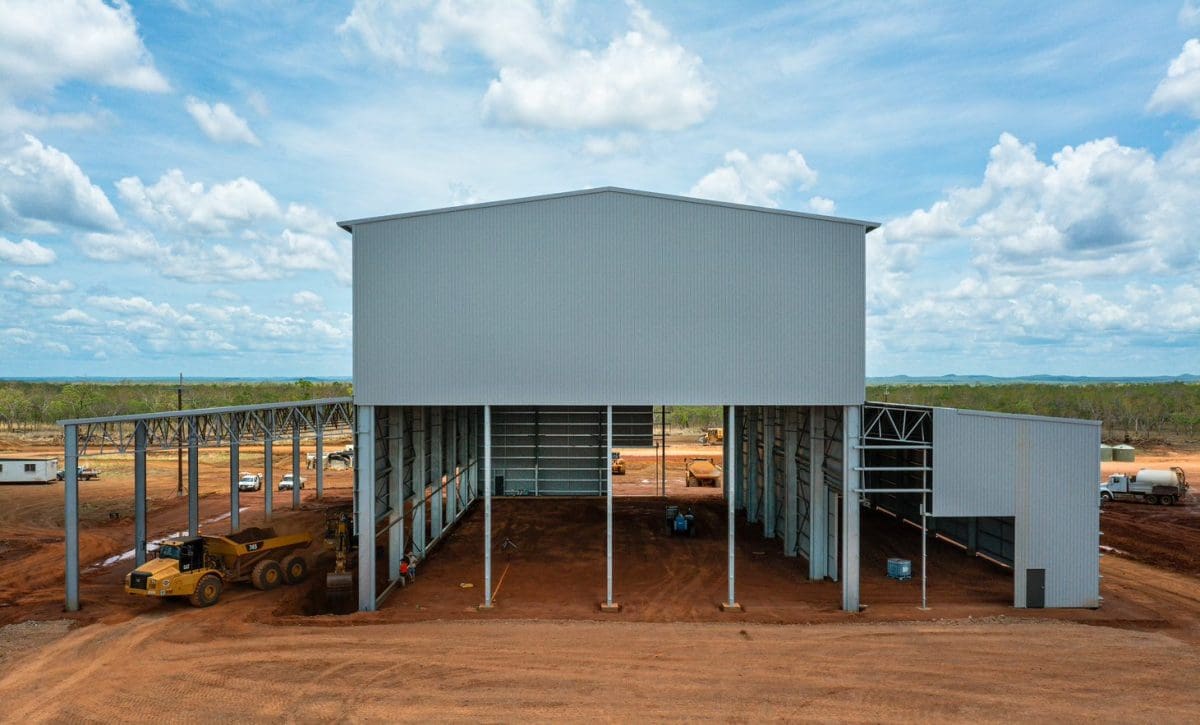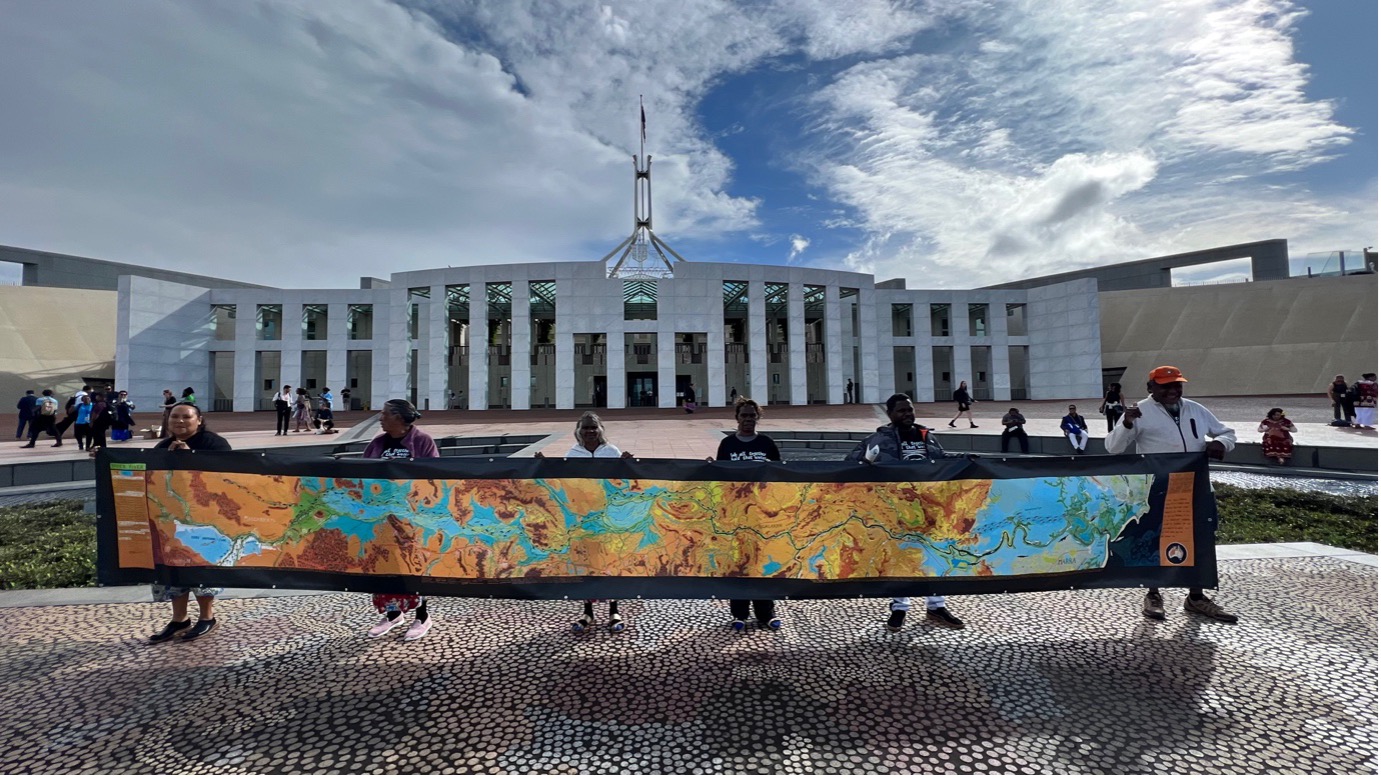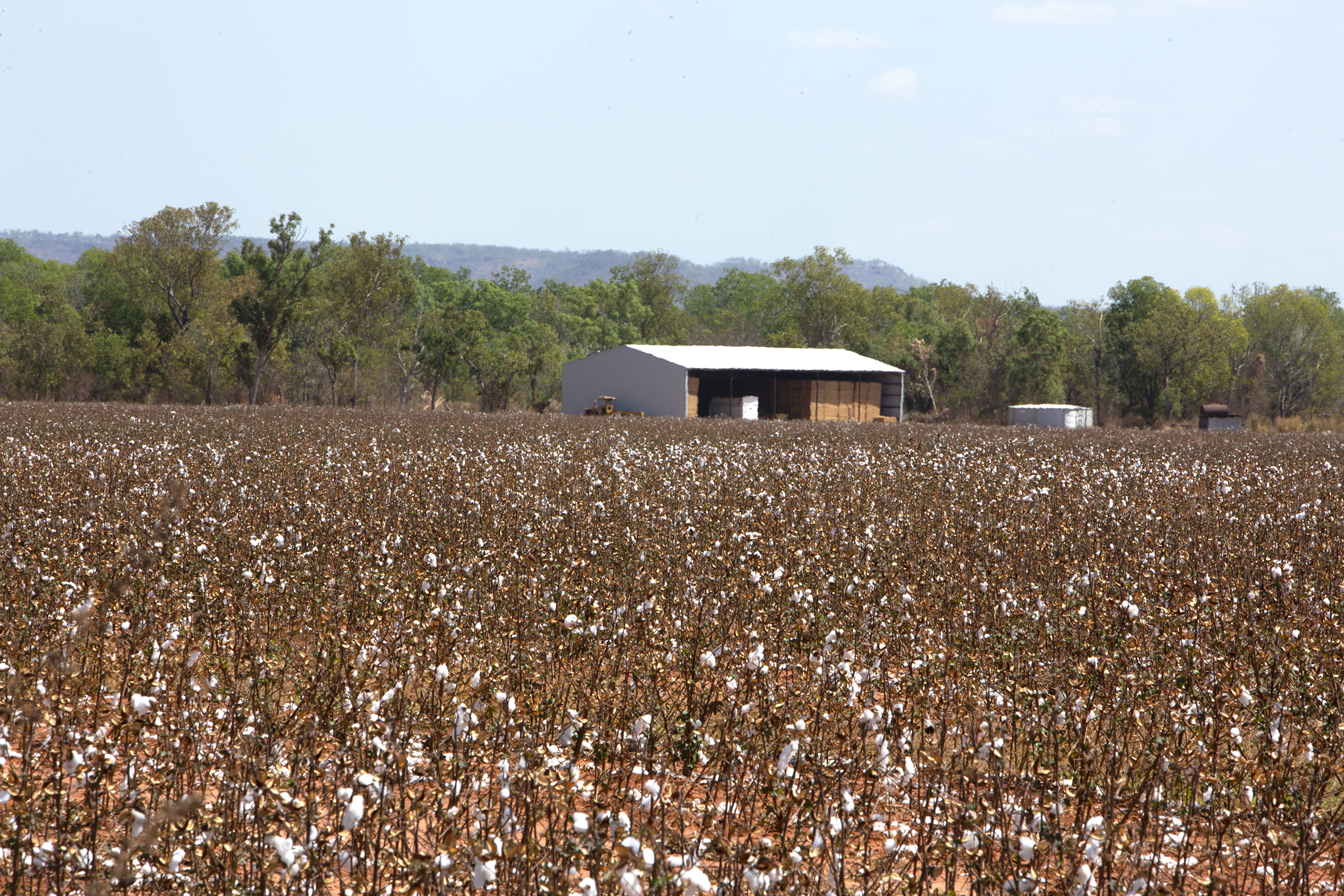News & updates
-

Stories from the river: Mark
Learn moreI was born on the banks of this river, it’s our life blood. I’ve fought for this river in the past and I’m ready to fight for it again. This river has beautiful cold water for drinking, we must keep it that way.
This river has got everything you need. It’s got what’s in the water and also what lives on the banks, the the fruit trees, berries and what you dig out of the ground. It’s got bamboo for making spears, along with all those different types of fish and sharks.
This river is the beginning of the floodplains at Daly River. It’s important that when the river does flood, it not only cleans the billabongs out and the floodplains, it rejuvenates it. A lot of people just think water, water, water. But they don’t look at the whole picture. It flies, it hops, it crawls, it walks, it swims. Everything revolves around water.
I want my kids and my grandkids to see this river like I’m seeing it. Well, better than what I’m seeing it. Something got to be put in place to protect it.

Mark Casey is a Nauiyu Elder from the Daly River
-

Video: Natural Values of Territory Rivers
Learn moreWitness what makes the treasures of the Northern Territory special! Our pristine rivers are a true natural wonder and are unique in this world.
Unlike elsewhere in the world, Territory rivers like the Daly, Roper, Adelaide and Victoria remain in good shape – they haven’t been dammed, over-extracted and polluted like rivers down south.
The health of these rivers is important for providing drinking water, food, jobs, and underpinning culture.
They also support a wide range of unique species, some of which are not found anywhere else.cotton, cotton industry, Daly River, floodplain harvesting, floodplainharvesting, land clearing, murraydarlingbasin, NT Government, roper river
-

Video: Floodplain Harvesting in the Northern Territory
Learn more“We’re looking down the barrel of a repeat of the Murray-Darling Basin here in the Top End and it’s something that the community is absolutely opposed to.”
Kirsty Howey from Environment Centre NT explains the troubling process of ‘floodplain harvesting’ and why it risks our rivers.
cotton, cotton industry, Daly River, floodplain harvesting, floodplainharvesting, land clearing, murraydarlingbasin, NT Government, roper river
-

‘NT government-commissioned probe of report predicting cotton environmental impacts finds most claims supported’: ABC
Learn moreRead the story HERE, listen HERE, or watch it HERE.
An independent assessment that the Northern Territory government commissioned to find out whether a green group’s report falsely claimed developing a major cotton industry could damage rivers and aquifers, has found most of its conclusions were correct.
Story by Jane Bardon. (ABC 2 January, 2024).You can sign our action asking the NT Govt to act to protect our rivers, floodplains and surrounding savannas HERE.
cotton, cotton industry, Daly River, environment, floodplainharvesting, land clearing, murraydarlingbasin, NT Government, Territory rivers, waterextraction
-

Cotton gin opening increases Northern development tussle: ABC PM
Learn moreListen to the story HERE.
The opening of the NT’s first cotton processing plant is being touted as an important step towards developing the North by the industry, but increasing community concerns over water use.
Interviews:
Sue Brosnan, Katherine cotton gin project coordinator
David Connolly, Tipperary Stations Group General Manager
Rosina Farrell, Jilkminggan Mangarrayi community leader
Kirsty Howey, NT Environment Centre
This report is from Jane Bardon. (ABC PM 15 Dec 2023 ).See updates and developments from this story HERE.
You can sign our action asking the NT Govt to act to protect our rivers, floodplains and surrounding savannas HERE.
cotton, cotton industry, Daly River, environment, floodplainharvesting, land clearing, murraydarlingbasin, NT Government, Territory rivers, waterextraction
-

Concerns raised over impact of industrial cotton gin on Northern Territory’s rivers
Learn moreMedia Statement
Key points:
- Australia’s cotton industry has major ambitions in the Northern Territory, projecting a future of hundreds of thousands of hectares of cropping, watered by billions of litres of water extracted from aquifers, rivers and floodplains.
- A cotton gin facility could facilitate severe impacts on the surrounding ecosystems, rivers, and floodplains.
- The owners of Tarwoo Station near Katherine were fined earlier this year after being found to have undertaken unlawful land clearing on the gin site.
- The cotton industry plans to rapidly embark on large-scale production in the NT, with more than 50,000 hectares of cropping forecast within a few years.
- The cleared arable area needed to meet short-term industry forecasts may be 100,000 to 150,000 hectares.
- Territorians are calling for no more water out of river systems, but draft policies would allow hundreds of gigalitres of water to be taken annually from rivers and floodplains.
The following quotes can be attributed to Mitch Hart – Northern Territory Manager for the Pew Charitable Trusts:
“Territorians remain gravely concerned at the prospect of a rapidly expanding cotton industry, fueled by the opening of an industrial cotton gin near Katherine this month.
“Communities in the Murray Darling have already witnessed first-hand the impact that large-scale cotton crops have on river catchments, corroding public trust and destroying local communities. The unlawful land clearing activities already documented in the Territory give little hope things will be different here.
“The Fyles Government should rule out giving the cotton industry more water from our rivers and floodplains, which starts with no more water out of the systems.
“It is time the Northern Territory Government listened to the concerns of our communities by protecting the fragile environment we depend on. “Territorians want a healthy future for our rivers, they care deeply about their health for water flows, fishing and are concerned about the industry push for large-scale cotton that would put iconic Territory rivers like the Roper and Daly at risk.”
-

Bringing the Roper River to Canberra
Learn moreWe’re writing to you from the halls of Parliament in Canberra, where we’ve just delivered a powerful message to politicians from all sides.
Our message is clear: water is life.
If we don’t protect our water – our river – our country, we risk losing the very thing that sustains our communities and our culture.
It was a long journey to get here. Northeast Arnhem Land, Katherine, Darwin, and then all the way down to Canberra.

Our 13-metre-long map of the mighty Roper River, showing all the cultural sites and songlines of our Country, took 18 months for us to make. Our songlines follow the water, connecting us all. If our water is taken, our culture and people are at risk.
And we talked to those people who need to listen. We met with Ministers, Senators and MPs from all sides of politics in this place.

We told them that the Roper River – our lifeblood – is under threat from cotton, fracking and other industries. These thirsty industries all risk taking too much water and damaging the river. We used the map to show them our Country, and everything it sustains.
You can read more about our time in Canberra on ABC News, or watch this video of our speeches in Parliament.
Now, we’re starting the long journey back home. We’re tired, and we’re looking forward to getting back to our Country, our homes, and our families.
But the fight to protect the Roper is not over.
The future of our river, our people and our culture all rely on urgent action. We cannot repeat the mistakes of the Murray-Darling. It’s time to forge a new path that respects and includes the knowledge and rights of First Nations people.
Thank you for your support – for the letters you sent to the people here in Parliament, and for showing us that thousands of Australians are behind us.
We know that you’ll be there with us at the next stage. We are going to need to keep telling those in Canberra that they need to act. Together, we can and will protect the Roper.
Thank you
Linda Williams, Naomi Wilfred, Daphne Daniels, Rosina Farrell, Clive Nunggarrgalu, Roland Nundhirribala

-

Tell Canberra to protect the Roper River
Learn moreTraditional owners along Australia’s mighty Roper are calling for protection of the river as they prepare to meet with ministers, MPs and Senators in Canberra!
The Roper is one of our last free-flowing, tropical rivers but its future is under immediate threat – from cotton, fracking, land clearing, and mining.
Northern Territory Government plans to allow huge amounts of water to be pumped from the Roper and its floodplains threaten to destroy this river and create a Murray-Darling disaster.
This is our chance to protect one of our last free-flowing rivers.
The river supports the livelihoods of local communities, culture, tourism, fishing, and its flows are essential to the health of endangered turtles and dugongs, as well as barramundi, prawn and crabs in the Gulf of Carpentaria. Its flows rely on groundwater that feeds the famous Mataranka and Bitter Springs.
The Federal Government needs to act. Right now is a once in a generation chance to ensure we don’t repeat the mistakes of the Murray Darling.
Traditional owner groups from across the Roper region have created a 13m long songlines map of their river and its floodplains. The map covers 20,000km2 of the Roper catchment, and has travelled hundreds of kilometres across the NT, from Numbulwar on the Gulf of Carpentaria, through Ngukurr, Urupanga, Minyerri, Jilkminggan and Katherine, collecting signatures in each Roper community along the way. On November 28th, they are travelling to Canberra to meet with members of Parliament to ask for help to protect the future of their freshwater.
Stand with the Roper River and its communities by backing their statement calling for protection, and for Environment Minister Tanya Plibersek to act to sustain our rivers for future generations.
-

The dangers of a large-scale cotton industry in the Northern Territory
Learn moreThe Northern Territory is at a critical juncture. Its rivers and other aquatic ecosystems – with outstanding natural and cultural values that are central to the wellbeing and economy of many Territorians – are largely still in good condition. But a major new cotton industry could put much of this at risk.
Australia’s cotton industry has major ambitions in the NT, projecting a future of hundreds of thousands of hectares of cropping (mainly on pastoral properties) watered by billions of litres of water extracted from aquifers, rivers and floodplains.
In 2020, Australia’s cotton crop was the smallest in 40 years, down by almost 90% on the 2018 crop due to the impacts of drought. The climatic uncertainties and water constraints and costs in southern cotton growing areas are driving a strong push by growers to transform northern Australia into a major cotton growing province. But the industry is ignoring the numerous government and CSIRO studies on the environmental constraints to cropping in the north and downplaying the potential for major environmental, cultural and economic impacts.
Previous proposals for large-scale cropping (focused mainly in the Daly River region) have also been
constrained by public concerns about the impacts of land clearing and irrigation. These concerns remain. In a February 2021 poll of Territorians, 69% of respondents said the cotton industry shouldn’t
be allowed into the NT until they ‘fix up their mess’ in the Murray-Darling Basin. Rivers are important to Territorians – 63% of respondents said they use Top End rivers for fishing, boating or other recreation – and this poll indicates that the cotton industry lacks a social license in the NT.The NT has an opportunity to learn from and avoid repeating the mistakes so evident in the Murray-
Darling Basin. But to achieve this, there needs to be a much greater community focus on the potential
consequences of a major cotton industry and a strengthening of the science, laws and policies needed to protect the environmental, cultural and economic values of NT rivers.

